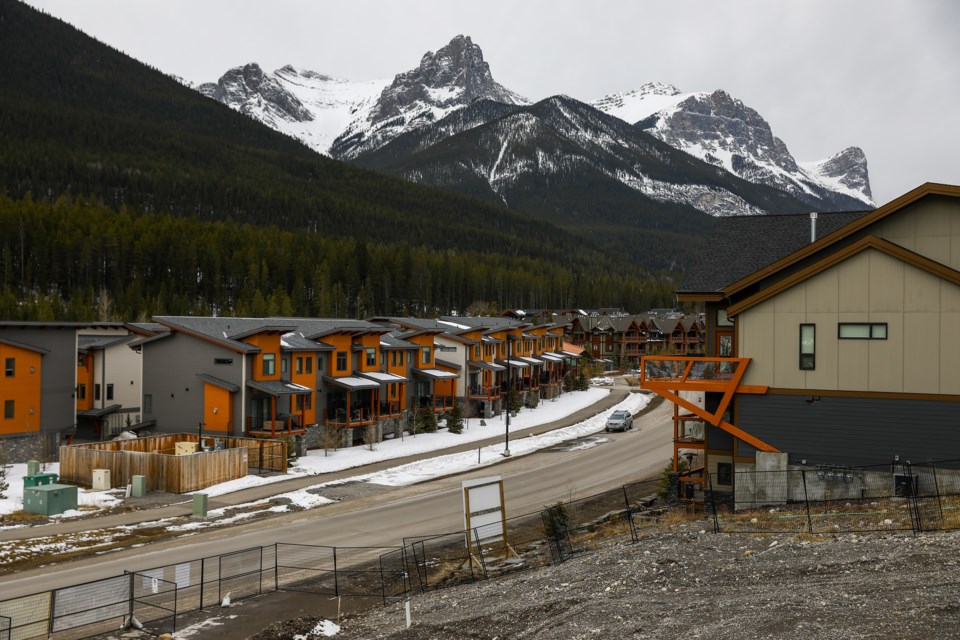CANMORE – The property tax rate for tourist homes used for commercial purposes could be increasing in Canmore.
The Town’s finance committee recommended at its Tuesday (April 26) meeting council direct staff to prepare an increase for commercial tourist homes to have their tax rate fall more in line with the non-residential mill rate.
The final tax rates will be decided at the May 3 meeting, leaving the potential for a quick change for what is often a contentious class of homes in the community.
“Part of it is how the tourist home has changed in nature in our community and thinking the taxation of that should change as well,” said Coun. Joanna McCallum, who brought forward the motion. “I want to make it clear I’m not speaking of personal use. I’m speaking of the tourist home class itself. When the tourist home concept came to Canmore – I want to say about 15 years ago – the idea behind it was giving people the ability to rent out their home for four to six weeks, go on a holiday and there’d be a benefit to the community in doing so.
“Now what we’ve seen is swaths of neighbourhoods bought up and the commodification of what is residential housing and making it a commercial use.
McCallum added how the process to get a tourist home classification is difficult, but a change would allow greater equality in comparison to what a hotel pays.
“Those commercial uses, although there are hoops tourist homeowners need to jump through to make their home tourist home, is very different than what a hotel would have to jump through to make it fit for guests,” she said. “It seems to me, parity between those classes really should occur.
“Not only are we talking about equality and putting businesses that are virtually the same on the same playing field from a taxation perspective… but really recognizing the flexibility a tourist homeowner has that a commercial operator does not have.”
At council’s April 19 committee of the whole meeting, it had asked staff to return with information for the finance committee.
Chelsey Richardson, the Town’s manager of finance, told the committee there were 607 tourist homes in Canmore. Of those, 108 were declared for personal use – meaning they’re taxed at the residential rate – and the remaining 499 are for short- and long-term renting.
She showed council under the tax rate, residential would be 2.278 while tourist home is 6.607 and non-residential is 7.018. However, if tourist homes used for commercial purposes were bumped up to the 7.018 rate, it would mean the residential tax rate would slightly dip to 2.261.
In actual dollars, it would mean a residential home with a median assessment of $800,000 would have its municipal taxes go from $1,823 to $1,809 for a drop of $14. A commercial tourist home assessed at a median value of $534,000 would have its property taxes go from $3,528 to $3,748 for an increase of $220.
“The tourist home class is essentially a non-residential sub-class of our residential and therefore should be taxed at the non-residential rate,” Mayor Sean Krausert said.
For tourist homes being used for personal use, the owners have to declare it as such each year to the Town. If not declared for personal use, it is taxed at the higher tourist home rate.
When a tourist home is declared for personal use, it means it’s strictly residential and not available to be rented out by the owner.
A tourist home can be rented for short- or long-term use, while a visitor accommodation has a maximum consecutive stay of 30 days and is not meant to be used for residential.
“There is flexibility within tourist homes and even when they declare as a tourist home and are using it, they still have the right to live in it full-time even though it’s at the higher rate. … If they want to rent it one week and go away, they can,” said Coun. Jeff Hilstad. “It’s a slight increase to the mill rate and it will affect their taxes. I’m open to bringing it back to council to take a look at.”
With housing supply at critical levels in the Bow Valley, the search for housing can be desperate and often leave people on the outside looking in.
With a potential shift in taxes, Coun. Wade Graham said there’s hope some of the commercial tourist homes will return to the residential stock to assist people in search of places to live.
“Taxes can be used as incentivizing and disincentivizing and in this case increasing the tourist home tax rate should encourage more folks to go residential on that zoning,” he said. “If that was the case, I’d be more than pleased. … In years of doing investment real estate, these are businesses and are about making money and return on investment.”
McCallum said she hopes council will take a deeper look at the role of tourist homes in Canmore during the current council term, which could look at reviewing municipal policy.
“I do believe we need to have a broader conversation about the tourist home and its positive as well as negative effect in our community and how we would like to position it as a class as well as use in our community moving forward. … It’s something I’d like to see us address this term.”




